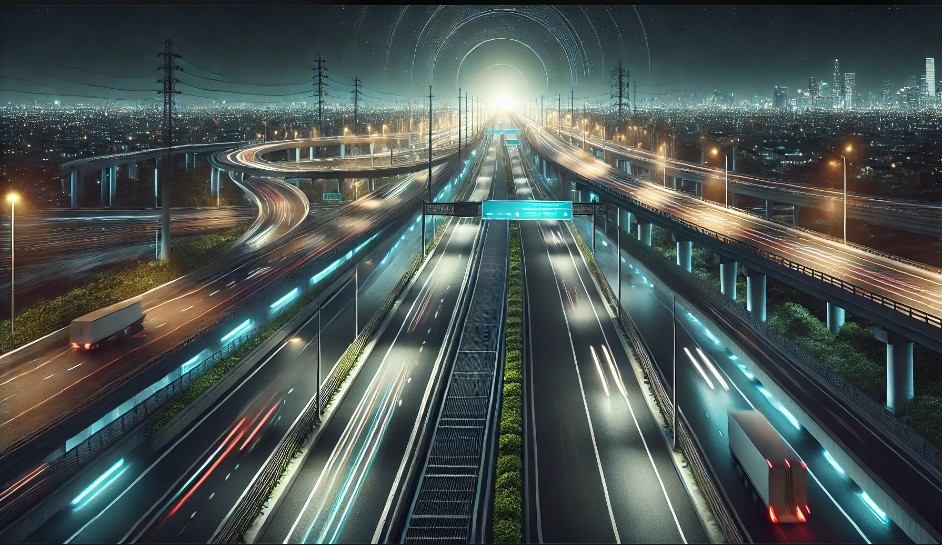The Poorvanchal Expressway, inaugurated in November 2021, is a significant infrastructure project that connects Lucknow, the capital of Uttar Pradesh, to Ghazipur in the eastern part of the state. Spanning approximately 340 kilometers, it is one of India’s most ambitious expressway projects aimed at enhancing connectivity, fostering economic growth, and improving regional integration. Developed under the Uttar Pradesh Expressways Industrial Development Authority (UPEIDA), the project serves as a key milestone in the state’s development strategy.
This content explores the major benefits of the Poorvanchal Expressway, highlighting its impact on transportation, economy, and society.
1. Enhanced Connectivity
One of the primary benefits of the Poorvanchal Expressway is its ability to significantly improve connectivity within Uttar Pradesh and beyond.
- Regional Integration: The expressway connects several districts in eastern Uttar Pradesh, including Lucknow, Barabanki, Sultanpur, Ayodhya, Ambedkar Nagar, Azamgarh, Mau, and Ghazipur.
- Seamless Transportation: It reduces travel time between Lucknow and Ghazipur from 10-12 hours to approximately 4-5 hours.
- National Connectivity: The expressway links to the Yamuna Expressway and the Agra-Lucknow Expressway, creating a continuous high-speed corridor from Delhi to eastern Uttar Pradesh and Bihar.
This improved connectivity facilitates easier movement of goods and passengers, enhancing regional trade and access to essential services.
2. Economic Growth and Industrial Development
The Poorvanchal Expressway acts as a catalyst for economic development in the relatively underdeveloped Poorvanchal region.
- Investment Opportunities: The expressway corridor is expected to attract industries such as logistics, manufacturing, and agro-processing due to improved access to markets and resources.
- Job Creation: Construction and subsequent industrial growth along the expressway are generating significant employment opportunities for local populations.
- Boost to MSMEs: Micro, Small, and Medium Enterprises (MSMEs) in sectors like handicrafts, textiles, and food processing are likely to benefit from easier access to domestic and international markets.
3. Promotion of Agriculture and Allied Sectors
Eastern Uttar Pradesh is primarily an agrarian economy. The Poorvanchal Expressway is expected to revolutionize the agricultural sector by:
- Efficient Transportation of Produce: Farmers can transport their produce quickly to major markets, reducing spoilage and ensuring better prices.
- Access to Inputs: Easier transportation of fertilizers, seeds, and machinery to rural areas will enhance agricultural productivity.
- Agri-Processing Industries: The establishment of agro-industrial hubs along the expressway will add value to agricultural products, boosting farmers’ incomes.
4. Development of Tourism
The Poorvanchal Expressway opens up new avenues for tourism development in eastern Uttar Pradesh:
- Religious Tourism: The region is home to many religious sites, such as Ayodhya (associated with Lord Rama), Varanasi (a spiritual hub for Hindus), and Shravasti (a Buddhist pilgrimage site). The expressway ensures easier access for pilgrims and tourists.
- Historical and Cultural Tourism: Improved connectivity can boost visits to cultural and historical landmarks in the region, such as Chunar Fort and the Ghazipur Opium Factory.
- Eco-Tourism: Natural sites like Katarniaghat Wildlife Sanctuary and the Ganga River ecosystem are more accessible, encouraging eco-tourism activities.
5. Reduced Traffic Congestion and Pollution
The expressway serves as an alternative to existing highways and state roads, helping to decongest major routes.
- Bypassing Urban Centers: Vehicles traveling long distances can avoid congested city roads, reducing traffic load in urban areas.
- Lower Emissions: A smoother and faster travel experience minimizes fuel consumption and vehicular emissions, contributing to environmental sustainability.
6. Strategic and Defense Advantages
The Poorvanchal Expressway holds strategic significance for national security:
- Emergency Landing Facility: The expressway includes a specially designed airstrip for Indian Air Force fighter jets, enabling emergency landings and military operations.
- Logistics and Mobilization: It facilitates quicker movement of defense personnel, equipment, and supplies, enhancing the country’s preparedness in times of need.
7. Social Upliftment
The project is expected to bring significant social benefits to the Poorvanchal region, which has long faced developmental challenges.
- Rural Development: Better connectivity is likely to improve access to education, healthcare, and public services in remote areas.
- Reduction in Migration: With increased economic opportunities in the region, outmigration to other states for employment may decrease.
- Standard of Living: Improved infrastructure and economic activities will enhance the overall quality of life for residents.
8. Boost to Real Estate and Urban Development
The development of the expressway has spurred real estate growth in towns and cities along its route.
- Residential Projects: Increased demand for housing is likely as people migrate to areas near the expressway for better opportunities.
- Urban Expansion: Towns along the expressway are witnessing rapid urbanization, with improved infrastructure and facilities.
- Commercial Growth: Establishments like malls, hotels, and restaurants are expected to thrive due to increased footfall.
9. Reduction in Logistics Costs
Efficient transportation facilitated by the Poorvanchal Expressway leads to lower logistics costs:
- Supply Chain Efficiency: Industries and businesses can move goods faster and at a reduced cost, enhancing their competitiveness.
- Exports: Access to ports and international markets via other expressways in the network boosts export-oriented industries.
10. Connectivity to Bihar and Neighboring States
The Poorvanchal Expressway extends its benefits beyond Uttar Pradesh, improving connectivity with Bihar and other eastern states.
- Cross-Border Trade: Enhanced connectivity facilitates smoother trade and economic exchange with neighboring states.
- Regional Integration: The expressway strengthens Uttar Pradesh’s position as a key link in India’s eastern transportation network.
11. Support for Government Development Goals
The Poorvanchal Expressway aligns with broader governmental initiatives such as:
- Make in India: Encouraging industrialization and manufacturing in the Poorvanchal region.
- Digital India: The expressway corridor is likely to attract tech-enabled industries and services.
- Doubling Farmers’ Income: By improving market access and reducing transportation time for agricultural goods.
12. Resilience During Crises
During emergencies such as natural disasters or pandemics, the Poorvanchal Expressway serves as a critical infrastructure asset:
- Faster Relief Operations: Improved connectivity enables quicker transportation of relief materials and medical supplies.
- Evacuation Routes: The expressway provides an efficient route for evacuations during floods or other disasters.
Challenges and Mitigation
While the Poorvanchal Expressway brings numerous benefits, certain challenges need to be addressed:
- Land Acquisition Issues: Ensuring fair compensation and rehabilitation for displaced communities is crucial.
- Environmental Concerns: Mitigation measures like tree plantations and eco-friendly construction techniques are essential to offset the ecological impact.
- Maintenance: Regular maintenance of the expressway will be required to ensure its long-term usability.
Conclusion
The Poorvanchal Expressway is a transformative project that has far-reaching implications for Uttar Pradesh and the nation as a whole. By enhancing connectivity, fostering economic growth, promoting tourism, and supporting national security, the expressway contributes significantly to the development of the Poorvanchal region.
As the region leverages the benefits of this mega-infrastructure project, it is poised to become a hub of economic and social activity, reducing regional disparities and contributing to India’s growth story.




